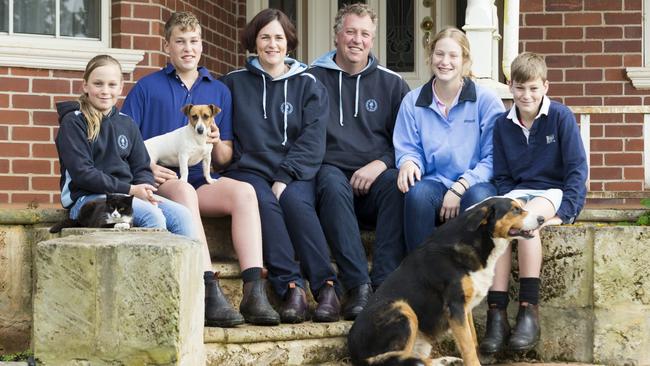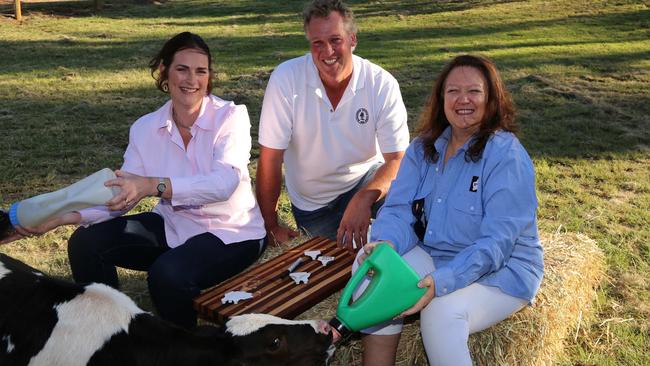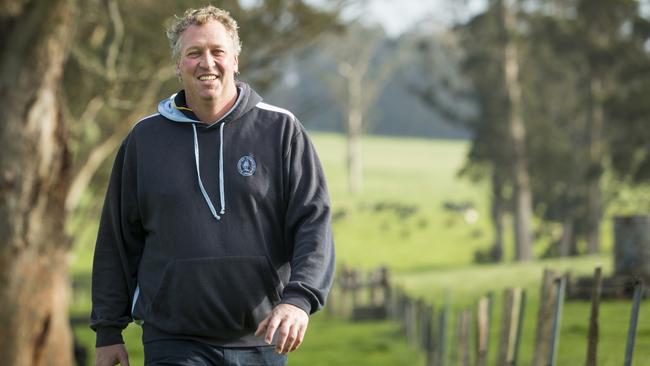Bannister Downs Dairy: West Australian business goes from zero to hero
THIS innovative West Australian dairy business leads the whey, writes SARAH HUDSON

IN THE dairy industry, you don’t get much more successful than Mat and Sue Daubney.
Arguably they’re a success story for Australian agriculture broadly.
Starting from a zero base in 1994 — when Mat returned to the family farm in Northcliffe, in the southwest of Western Australia — the couple transformed the-then beef property, building a 90-unit rotary dairy in 1999 and growing their Friesian herd to the point where they currently with 1500 milkers.
When faced with industry deregulation, they built an on-farm processing facility in 2004-05, launching Bannister Downs Dairy, with the help of a $162,000 Federal Government grant.
Current annual production is seven million litres (about one million litres of that is sent to Lion Dairies), processed into fresh and flavoured milk, half of which is sold to cafes and restaurants, almost a half to Coles and independent grocers, and less than 2 per cent exported, predominantly to Singapore.
An on-farm cafe brings up to 8000 visitors annually.
Initially the start-up was close to going broke, but through sheer hard work, Mat said, “eventually the losses got smaller over the years”.
“Growth has been 30 per cent annually but we’ve had to cap that since 2012 because we reached production capacity,” said the 43-year-old father of four, who along the way has won a string of industry awards.
And this is where the Daubney success story really gets interesting.
Having reached capacity and wanting to grow further, in 2014 the Daubneys signed a joint partnership with Hope Dairies WA, a subsidiary of Hancock Prospecting.

CREAM ON TOP
JOINING forces with mining magnate Gina Rinehart means next year they will open their new on-farm Creamery Complex, currently under construction, with plans to lift milk production threefold within five years, with 4000 cows on 5000ha, and the majority of fresh milk exported by the end of 2020.
The complex includes a 600-cow rotary dairy, while Mat said new dairies will have to come into production to keep up with supply.
Mat said the partnership with Hope Dairies had supplied investment in the Creamery, with the Daubneys still owning their family farm, with some land owned as a partnership and Hope Dairies including some of their own land in the dairy deal.
The Daubneys will continue to take a small supply from a neighbouring dairy.
“Back in 2006 it was a really difficult time for the business and family,” Mat said. “We used personal money and sold everything to get the business up and running.”
He said banks were not keen to invest at the time in the dairy industry.
“Ten years on and we wanted to grow the business again and while banks were more positive we were not confident we could service bank debt during the construction and start-up stages without considerably compromising the project.”
He said by chance in 2010 Sue won the First Amongst Equals at the WA Business News 40 under 40 event and Gina Rinehart, a patron of Small Business Australia, wrote and congratulated her.
“Sue was surprised someone as busy as Mrs Rinehart would take the time to get in touch and over the following years they shared articles of interest.”

GROW FOR IT
IN 2014 Gina suggested they meet for a meal, which led to the partnership to enable Bannister Downs to develop the next stage of its business, signed in December 2014.
Until the Creamery opens in March next year, it’s business as usual at Bannister Downs Dairy.
Mat said the family farm was originally purchased by his grandparents in 1924 and run as a dairy, and from 1971 to 1994 his family ran it as a Hereford and Simmental stud.
As such, Mat established the Friesian herd on 400ha, with some Jersey-cross.
Six times a year cows are joined for year-round calving, with about 60 joined with embryo transfers to form the nucleus of their herd, and the remainder joined with artificial insemination using sexed semen from Semex genetics.
Given their herd walk up to 2km, strong feet and legs are key genetic components, as well as moderate milk production: “We’re not looking to break records with production volumes”.
The herd produces on average 4.2 per cent butterfat, 3.2 per cent protein and as a grade one supplier cell count is 150,000-175,000 cells/ml.
They use no hormones, and antibiotics only as required.
Any animal not being bred from is joined through AI — with a mop-up bull — to Wagyu for an F1 Friesian cross, reared to 200kg, with about 500 calves trucked to NSW feedlots.
The Daubney farm is dryland, receiving an average annual rainfall of 1200mm.
“We don’t make any silage and our focus is on growing grass 12 months of the year,” Mat said.
He added that up to two months of the year they buy in hay when pastures dry off, and cows receive an average annual ration of 1.4 tonnes of GM-free grain in the dairy while milked.
Otherwise about 50 per cent of the property is reseeded annually to ryegrass and oats, with the remainder permanent perennial pastures.

HANDS OFF
MAT’S production philosophy is minimal intervention and as such he uses small amounts of superphosphate, successfully adding nitrogen through vetch pastures, while he uses chicken manure and lime on pastures.
“I use nitrogen fertilisers but try and grow grass using minimal amounts. “
Calves are kept with mums longer than standard dairies — up to 48 hours; while bobby calves are grown out to six months of age.
“A decade ago customers at the cafe would ask if we were organic. Now the questions are all about bull calves and how we rear them. The discussion has changed completely.
“Because our farm is transparent, customers expect these welfare standards.”
In the same way, their processing plant batch pasteurises at low temperatures, not above 66C, and they also offer a non-homogenised full cream milk.
“When we started processing we didn’t have a clue but we’ve made these decisions based on the quality of the product.”
Bannister Downs Dairy also uses chalk-based packaging which breaks down over time.
The new Creamery will include a voluntary milking set-up with fully automated processing to enable world’s best practice food safety, traceability and preventive health management in their milking herd.
Mat said in Western Australia at least, the demise of mining had seen agriculture rise up to be the new “positive space for people to invest”.
“When we started processing we employed three people; fast-forward 10 years and we now have 60 on our team,” he said.
“That’s not because we charge more for our milk but we’re capturing the value locally rather than releasing it to someone else.
“Agriculture doesn’t have the super highs and crashing lows of the mining industry and farming is a good business to invest in.”
He said Mrs Rinehart’s (no, he doesn’t call her Gina) investment in their family dairy business was an indicator of confidence in the future success of the sector.
“I said to Mrs Rinehart that we are a family business and yours is a family business but yours is a bit bigger, but essentially we share the same principles.”


